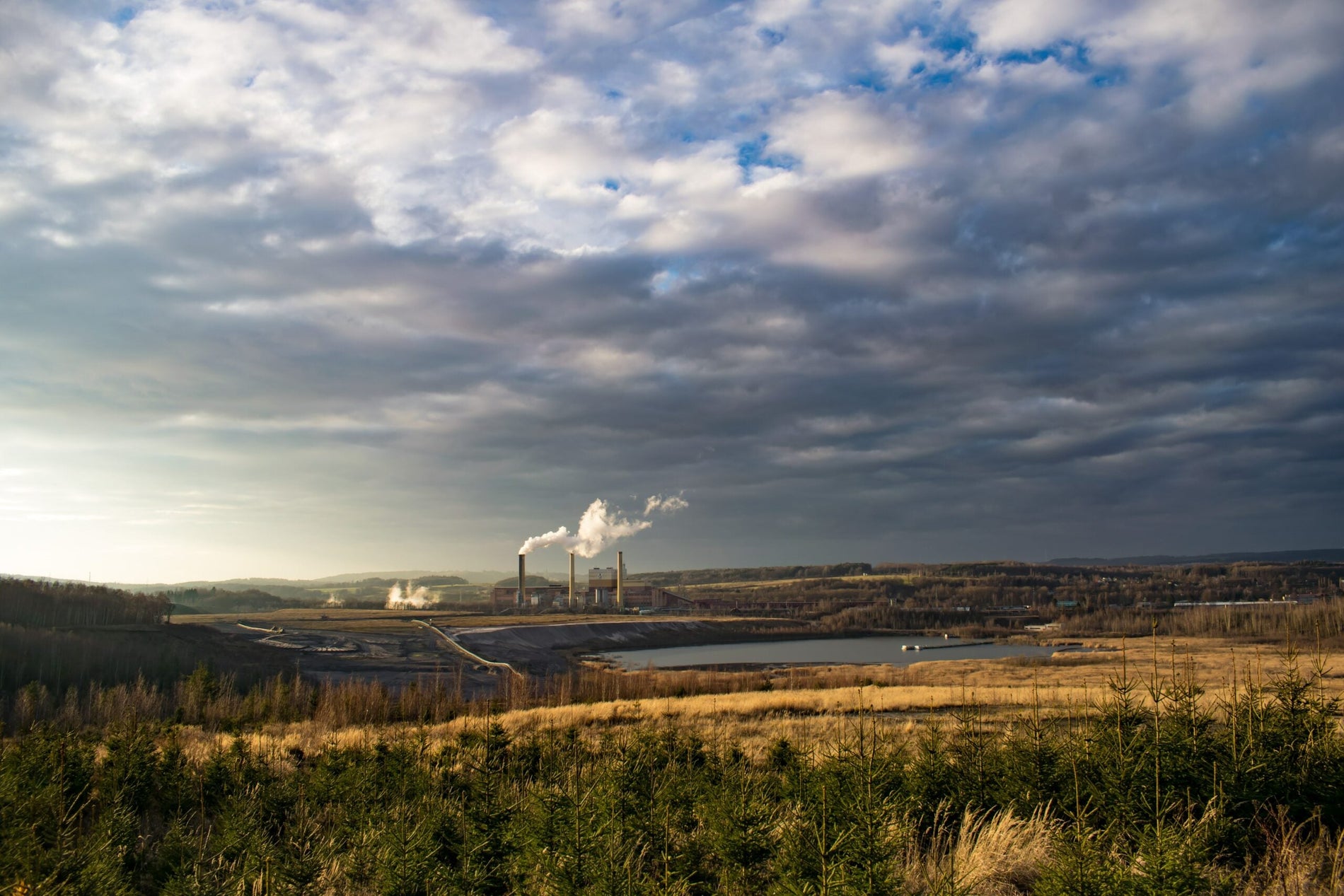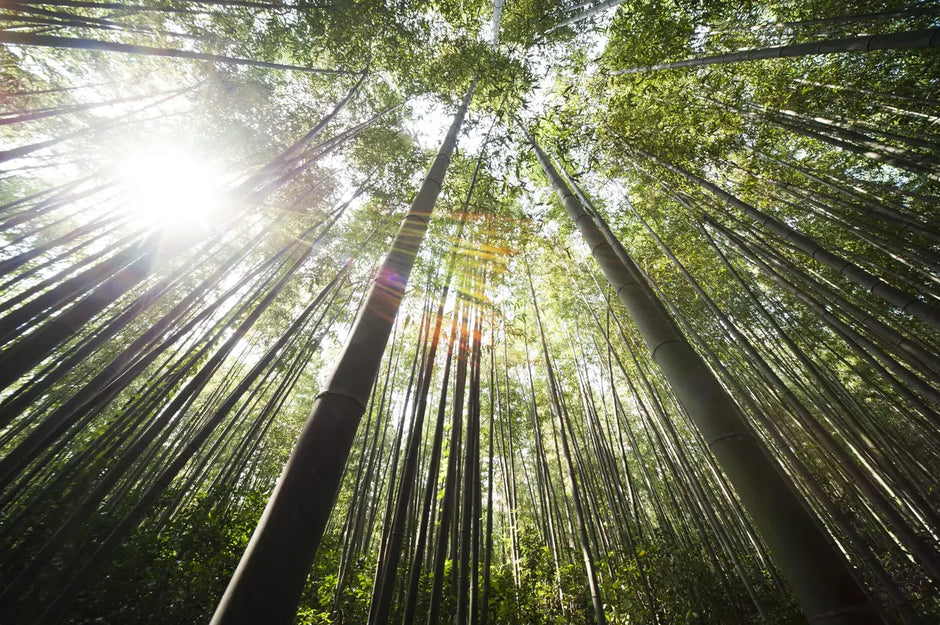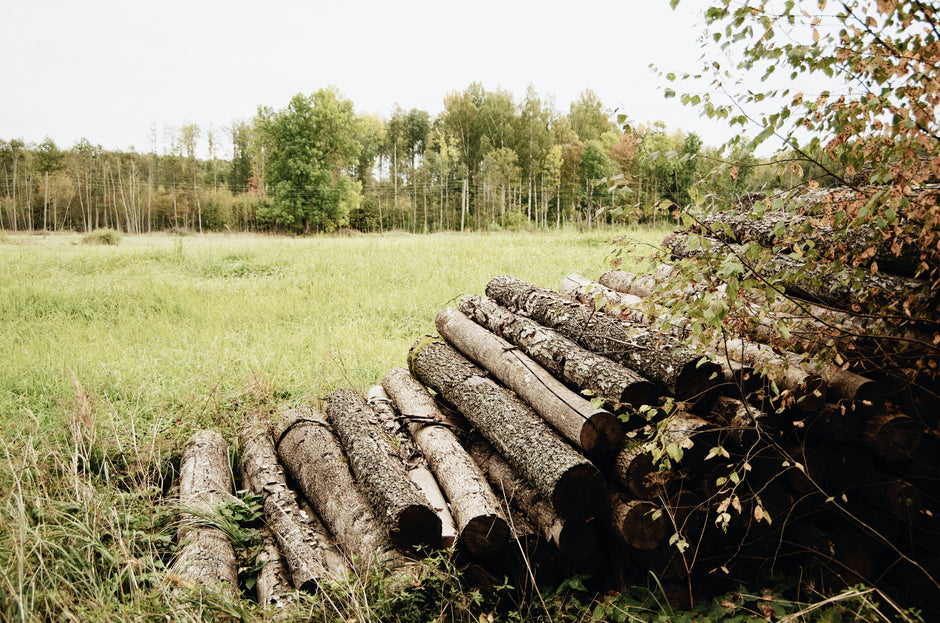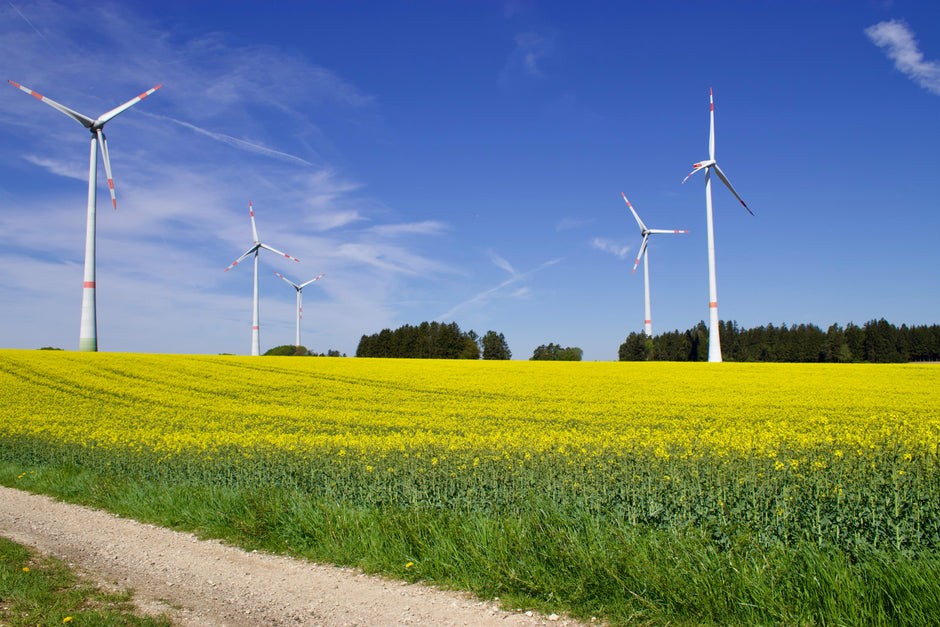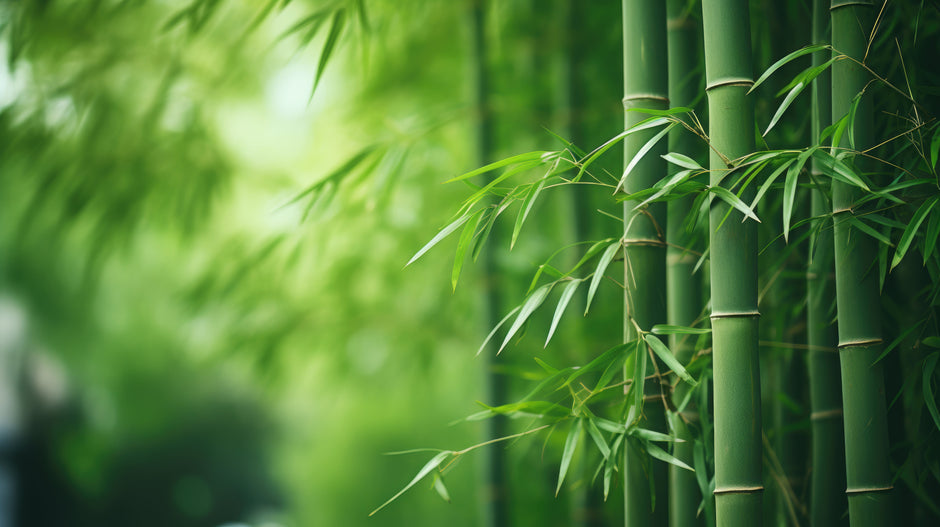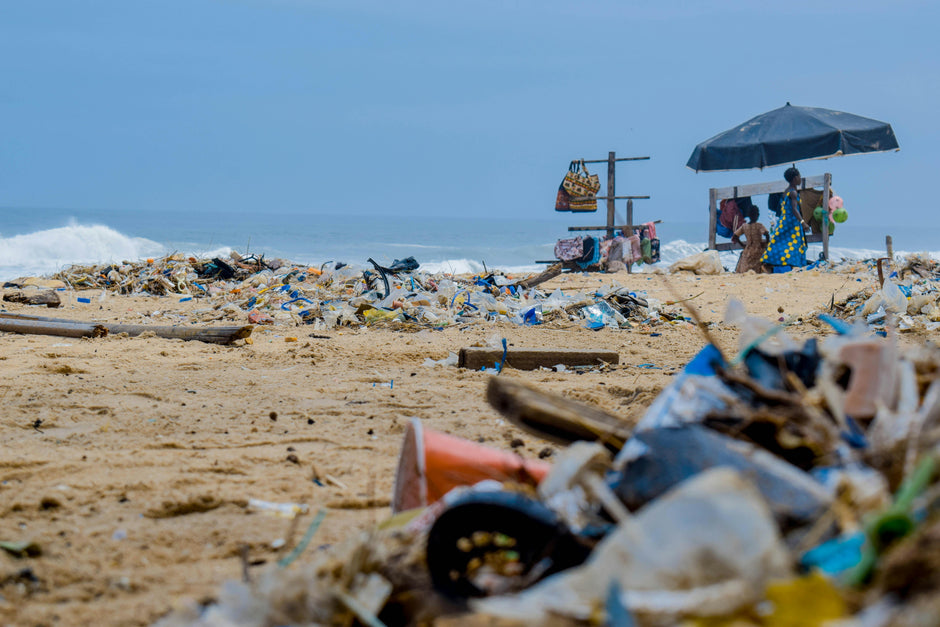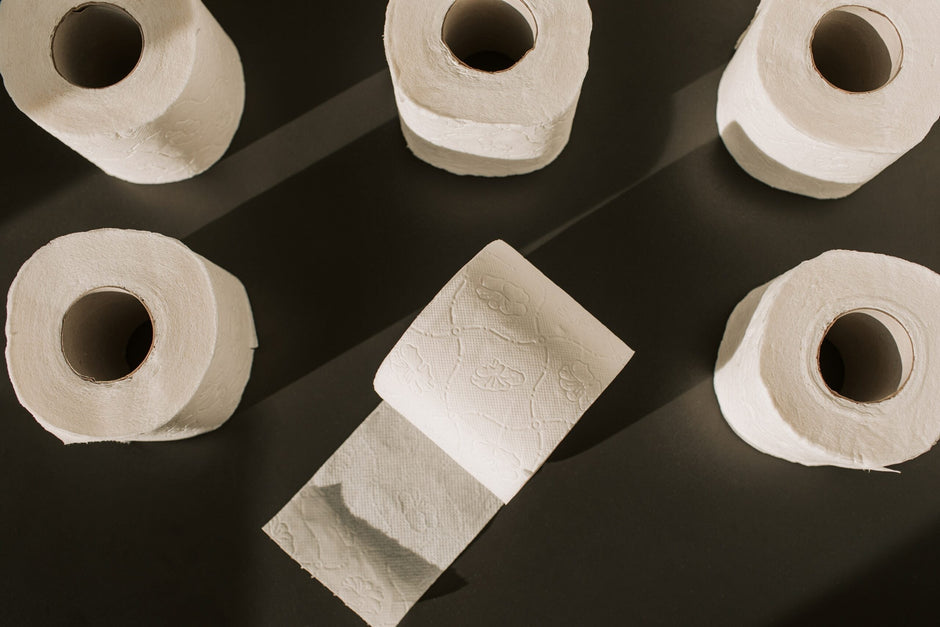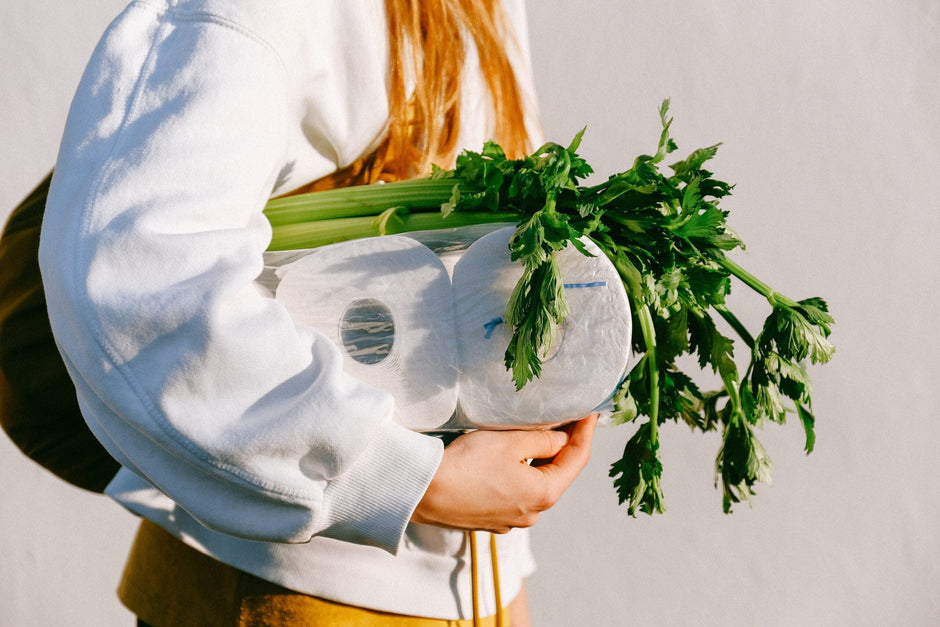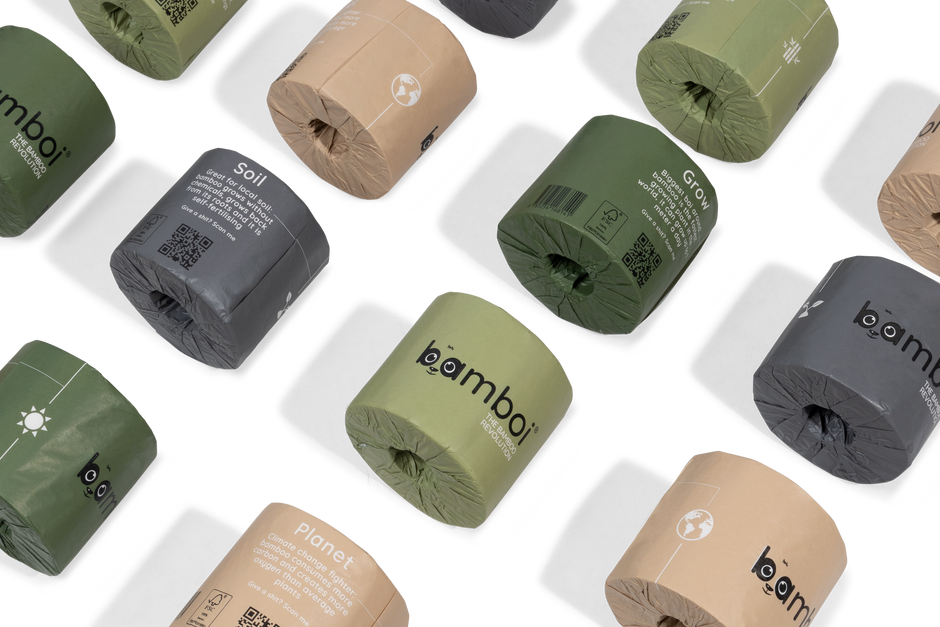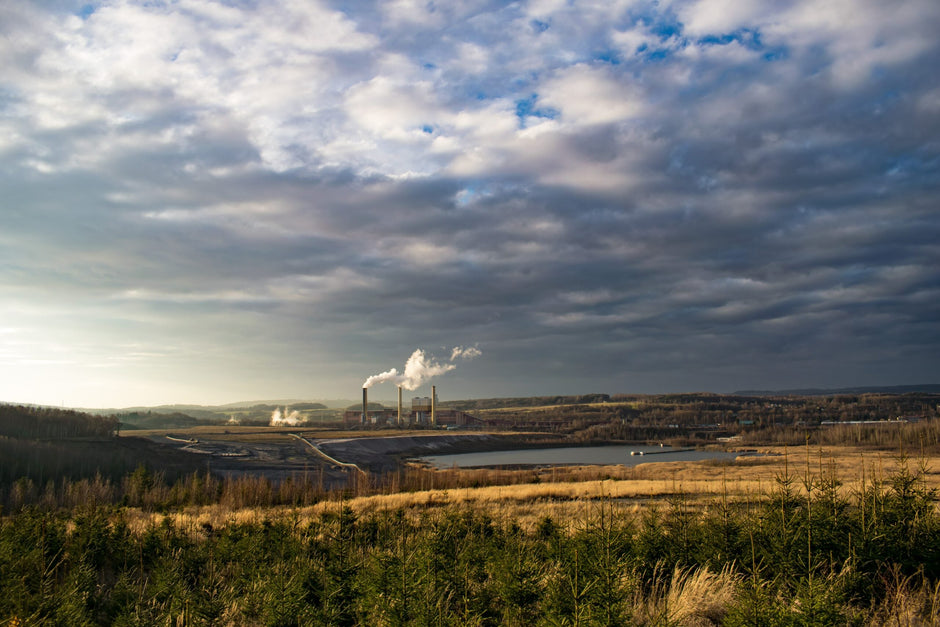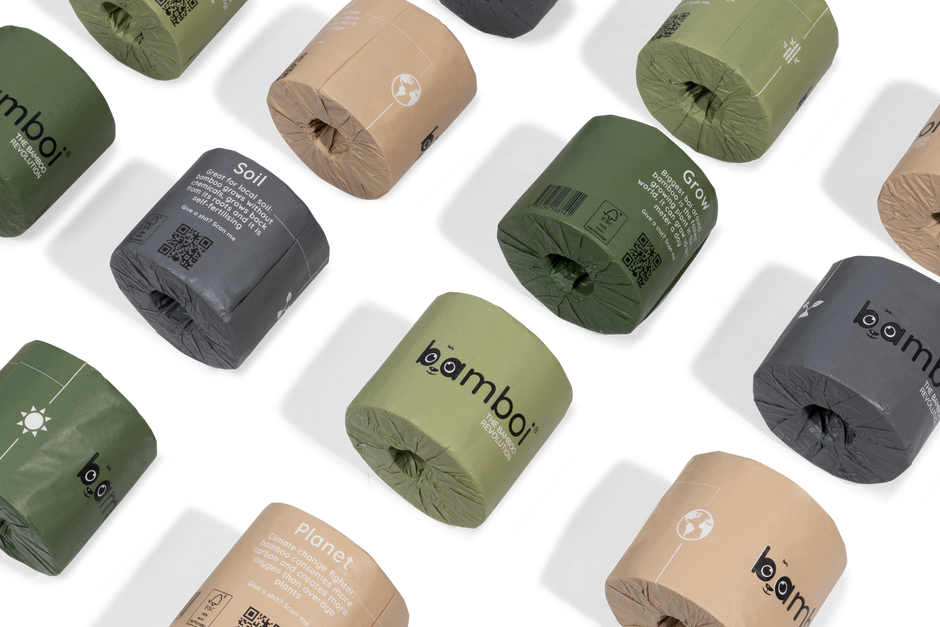Bamboo is an excellent solution to the environmental damage associated with traditional paper production. At Bamboi® we produce sustainable toilet paper that contributes to a better world. In this article, we guide you through the production process and show how Bamboi® is committed to sustainability.
The production process: from bamboo to toilet paper
-
Harvesting bamboo: Our bamboo is sustainably harvested in the Sichuan region in China, where the world’s largest bamboo forests are found. Bamboo is the fastest growing plant in the world and can grow up to 91 centimeters per day. After harvesting, the bamboo regrows from its own roots, which prevents deforestation.
-
Processing into pulp: The harvested bamboo stalks are cut into small chips and then mixed with a solution of water and sodium hydroxide. This mixture is boiled to separate the lignin (wood substance) from the cellulose fibers, resulting in a pulp. Sodium hydroxide is a natural ingredient that is environmentally friendly and 100% biodegradable.
-
Cleaning and filtering: The pulp is washed, filtered, and refined to remove impurities. Our supplier has a water treatment facility that cleans all the used water, making it pure enough for aquatic life.
-
Paper formation: The cleaned pulp is run through a paper machine, where it is formed into thin sheets and dried. This results in strong and soft toilet paper without the need for additional chemicals or bleaching agents.

Eco-friendly advantages of bamboo compared to wood
-
Rapid renewability: Bamboo grows much faster than traditional trees and can be harvested within three years, whereas trees such as pine and oak take between 30 and 80 years to mature.
-
CO₂ storage: Bamboo forests store up to 48 tons of CO₂ per hectare per year, contributing to the reduction of greenhouse gases in the atmosphere.
-
Water and energy efficiency: The production process of bamboo toilet paper consumes less water and energy compared to traditional wood pulp paper.
-
No deforestation: Because bamboo regrows after harvesting, there is no deforestation. This helps preserve biodiversity and prevent soil erosion.

Why choose Bamboi®?
By choosing Bamboi's 100% bamboo toilet paper, you contribute to:
-
Protection of forests: Our products are completely tree-free, which helps combat deforestation.
-
Reduction of CO₂ emissions: Using bamboo contributes to CO₂ storage and reduces the emissions associated with traditional paper production.
-
Water conservation: Our production process is designed to minimize water usage and recycle as much as possible.
-
Hypoallergenic products: Our toilet paper is free from added chemicals and is therefore suitable for sensitive skin.
At Bamboi® we combine comfort and quality with sustainability. Our rolls are individually packaged in bamboo paper and printed with ink based on vegetable oils. The boxes are made of 100% recycled cardboard and serve as a logistical aid, so that the rolls are the only packaging. Moreover, our products are delivered to your home climate-neutrally and plastic-free.
Together for a sustainable future
Together with our users and partners, we make a positive impact on the environment by making the simple switch to bamboo toilet paper. Join the Bamboi® revolution and contribute to a more sustainable future!
Discover the extra advantages of bamboo toilet paper! Learn how our products contribute to a sustainable future and why they are the best choice for your household.
Latest Articles
- Choosing a selection results in a full page refresh.


